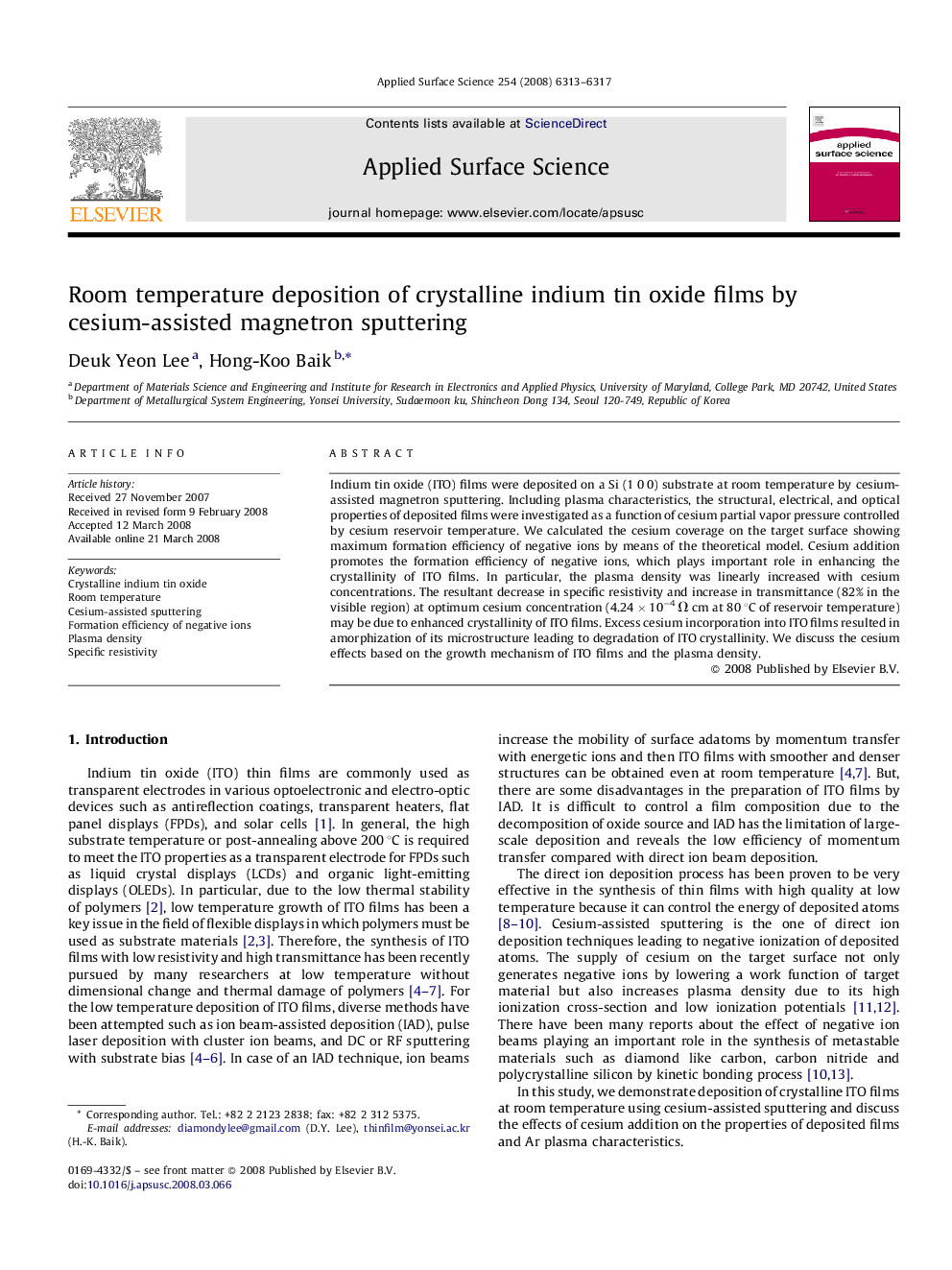| Article ID | Journal | Published Year | Pages | File Type |
|---|---|---|---|---|
| 5361922 | Applied Surface Science | 2008 | 5 Pages |
Abstract
Indium tin oxide (ITO) films were deposited on a Si (1 0 0) substrate at room temperature by cesium-assisted magnetron sputtering. Including plasma characteristics, the structural, electrical, and optical properties of deposited films were investigated as a function of cesium partial vapor pressure controlled by cesium reservoir temperature. We calculated the cesium coverage on the target surface showing maximum formation efficiency of negative ions by means of the theoretical model. Cesium addition promotes the formation efficiency of negative ions, which plays important role in enhancing the crystallinity of ITO films. In particular, the plasma density was linearly increased with cesium concentrations. The resultant decrease in specific resistivity and increase in transmittance (82% in the visible region) at optimum cesium concentration (4.24 Ã 10â4 Ω cm at 80 °C of reservoir temperature) may be due to enhanced crystallinity of ITO films. Excess cesium incorporation into ITO films resulted in amorphization of its microstructure leading to degradation of ITO crystallinity. We discuss the cesium effects based on the growth mechanism of ITO films and the plasma density.
Related Topics
Physical Sciences and Engineering
Chemistry
Physical and Theoretical Chemistry
Authors
Deuk Yeon Lee, Hong-Koo Baik,
